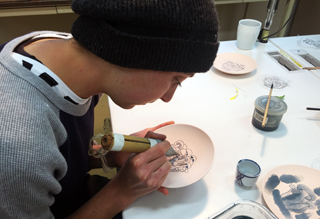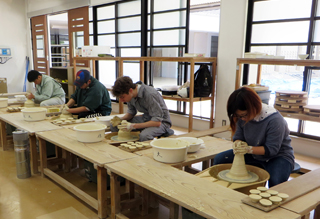
Program
1 How It Works
The SPACE-ARITA program is a special program set up for exchange students from universities affiliated with Saga University, in which students gain technical knowledge in the fields of art and design, primarily in relation to ceramics.
Centered around ‘Independent Study’, which serves as the main project, students will engage in ‘Fieldwork on Japanese Affairs’, which is fieldwork studying the ceramics industry in the Hizen area. Depending on your research and interests, you can take classes for and with Saga University students. We provide a unique and flexible curriculum in which to boost your expertise.
During the SPACE-ARITA program, exchange students will, through academically meaningful interactions with Japanese students and locals, deepen their understanding and awareness of Japanese society and the area’s people.
The minimum course requirements for exchange students are 12 credits each semester.
Also, when the study abroad period ends, students who fulfilled the requirements will receive a certificate of completion from Saga University.
At the end of the semester, the number of credits earned are reported to the international division or similar at the university in which the exchange student is enrolled.
The university at which the exchange student is enrolled will decide whether or not to accept these as credits at the university based on the student’s transcript.

(1) Principal Research
“Independent Study”: 6 credits
‘Independent Study’ is the main project of exchange students, and the majority of their time each week will be spent on it.
First, students will set what they wish to learn in Arita as their research theme, and then, in principle, set the course of research through meetings with their professors that take place each week.
Then, along with the mutually-related ‘Fieldwork on Japanese Affairs’, surveys, trials, and experiments for research will take place, and the project’s content will fill out.
Based on your individual research theme, here you will learn the entire process related to ceramics, from idea planning to model and mold making, forming or casting for raw products, firing, and more. The exchange students themselves will manage their projects, including the schedule.
Advice and technical guidance through expert knowledge characteristic of the Hizen area will be confirmed at the meetings and take place as appropriate in line with progress in each.
Finally, students will make a booklet on their research and, after completing the term, will put together a final presentation.
For the final presentation, a number of people will attend the presentation of results: Saga University teachers and students, ceramics makers from the Hizen area, locals, the media, and more.
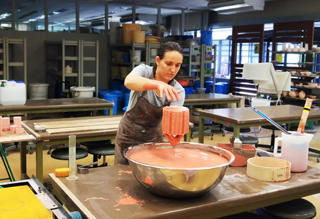
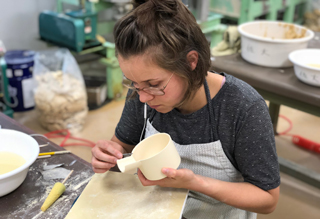
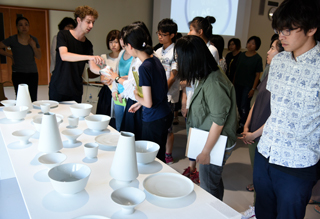
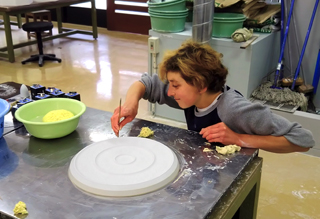
(2) Supplementary Research
“Fieldwork on Japanese Affairs”: 2 credits
For ‘Fieldwork on Japanese Affairs’, students will, from a historical perspective gained by visiting producers of pottery in Saga prefecture (primarily ceramics makers in the Hizen area), as well as visits to art galleries and museums, learn about the area’s main industries and deepen their understanding of porcelain.
Students will learn the specific aspects of Arita ware, which comes from the birthplace of Japanese porcelain and has spread across the world, as well as the varied ceramics expressions of the Hizen area, the history of the ceramics industry especially in porcelain, and modern ceramics. Through these, as well as through Japanese culture, they will experience the depth that is present in all.
Students will perform surveys and have discussions at the places they visit. By making comparisons with the ceramics industry in other countries, they will take a relative perspective to ceramics, and have the opportunity to consider it anew.
Perspectives that students had before studying abroad toward Japanese ceramics, as well as related cultural aspects, will surely be changed, and they will gain new insights.
Classes are planned to take place once a week for a total of 15 times. However, the program will primarily center around half- and full-day fieldwork, such as visits and study tours to various ceramics industry-related locations.
In order to deepen the relationship to their ‘Independent Study’, it will, in principle, take place at the start of the term (Spring semester: April-May, Fall semester: October-November)
Finally, students will make a booklet that brings together all of their surveys and study tours.
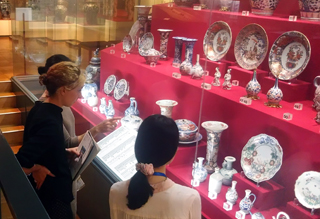
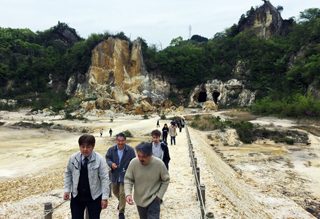
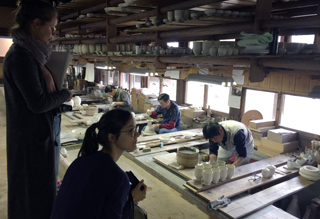
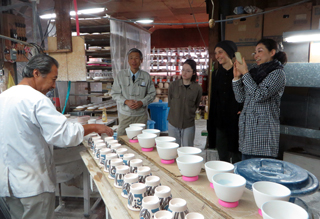
(3) Classes taken (regular students’ classes): 4 credits or more
Ceramic Wheel Throwing Techniques I,II,III
Ceramic Model and Mold Making I,II,III
Ceramic Molding Techniques I,II,III
Ceramic Painting Techniques I,II,III
Glaze Chemistry I, II (content varies according to each program)
By taking these classes, students will strengthen their skills for ‘Independent Study’ and other aspects, and be able to learn about Japanese ceramic production methods.
Classes will take place once a week, for a total of 15 times.
Classes will be taken together with Japanese students, but as practical training is the main focus, explanations will be given in English as appropriate.
Students will confirm the detailed schedule with the professors in charge of the classes they are taking.
